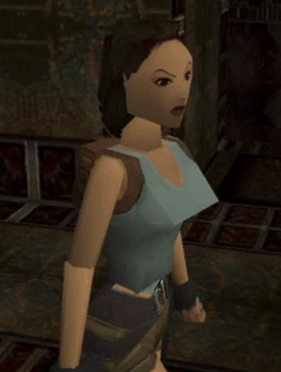- The Frame
- Posts
- How AI Video Control & YouTube Power Up Your IP Strategy
How AI Video Control & YouTube Power Up Your IP Strategy

Where creative IP meets business and emerging tech
Hi there! 👋
Welcome to The Frame.
Your essential update on creative IP and production. Each issue brings you practical tools, actionable frameworks, and real-world case studies, designed to help you leverage new opportunities and stay agile in a rapidly changing industry
In The Frame this week:
Quick Fix: Precision in AI Video Creation
Invoke.AI is giving creators ‘infinite’ control over first and last frames for AI-generated videos, a game-changer for higher-quality outputs. (It’s like Photoshop with powerful AI tools).
What it solves: The newest and best way to control generative AI video is to set the first and last frames, and allow the AI to extrapolate the frames in-between (it’s like tweening with photographs). Creating more specific and stylistically coherent first and last frames leads to more accurate generated video.
Key Features:
Granular Control: Innovative ‘control layers’ let you define regions of an image to alter - including using text prompts for AI-generated assistance
Model training and fine-tuning: Train AI models on your own proprietary content for more specialized and tailored image generation
Collaboration features: secure team workspaces with role-based access controls, enabling teams to work together efficiently on projects while maintaining security
Custom Workflows: Build processes on brand guidelines and styles to ensure all assets are coherent; facilitates team members to easily generate their own images within your style guide
Secure Ownership: You retain complete control and ownership of your work, models, and intellectual property (they’re SOC-2 compliant).
Licensed for commercial use: You can use your own models and data and create a fully-owned pipeline.
BONUS: You can use Invoke to alter reference images to make them accurate enough to use for storyboards!
💡 Pro Tip: Keep it short
The longer the time between frames, the more room for AI to introduce unwanted artifacts.

Glitch Production’s breakout hit launched on YouTube
Case in Point: Glitch Productions x YouTube
The Amazing Digital Circus (TADC) skyrocketed from an incomplete YouTube web series to a Netflix deal, demonstrating YouTube’s potential for IP development.
🤯 Netflix purchased streaming rights of the first 3 eps. - before the remaining eps were complete AND it’s a non-exclusive deal. TADC will still be available on YouTube - for free.
Key Stats:
Episode 1: Reached 100 million views in 1 month
Episode 2: Hit 8 million views in just 3 hours.
Monetization: 80% of their funding comes from merchandise.
What’s the Significance?
YouTube has become a powerful platform for intellectual property (IP) development, testing, and audience building.
Massive Reach: YouTube’s vast global audience allowed TADC to quickly gain millions of views.
Feedback Loop: Real-time metrics and audience engagement helped refine episodes
Low-Cost Testing: YouTube provided a low-barrier entry for testing the series concept, helping TADC build a fanbase without significant financial risk.
Monetization Options: Ads, memberships, and merch helped fund the series’ growth
Discovery via Algorithm: YouTube’s recommendation algorithm helped expand the show’s viewership, driving viral growth and attracting new audiences.
Back Catalogue Boost: Glitch Production’s existing slate benefitted from the surge in eyeballs.


💡 Playbook: How to Use YouTube for IP Growth (like Glitch)
Pilot on a Budget: Launch low-cost content to gauge audience interest.
Use ads: If budgets allow, use ads to target your specific audience demographic.
Engage Viewers: Build community through comments, live streams, and fan art. Consider:
Share BTS (behind the scenes): Bloopers, work in progress, anything that increases the viewers sense that they are part of the process. (Check out Glitch’s X profile for examples).
Allow remixing: Let fans create their own content on and around the IP that you have created. 👇️
“We're not really concerned about copyright violations, people can tell when something's by the creators and when something's fan made.” - Kevin Lerdwichagul, CEO Glitch Productions
Optimize for Search: Use keyword-rich titles and tags to boost visibility.
Monetize: Use ads, fan contributions, and merchandise to build revenue. (See Glitch’s merch).
Leverage Data: Track audience engagement to shape future content.
Expand: Once proven, use collected data to support pitches to commissioners.
💡 Bonus: Extended YouTube shorts
YouTube shorts have just been extended to 3 minutes - offering scope for character intro’s, back stories, or mini-episodes.

John Finger using drawing as a prompt, Magnific for style transfer and Minimax:Hailuo for the video
Creative Workflow: Style Transfer with Magnific.AI
Looking to experiment like John Finger? Magnific.AI can up-res low-res images and videos, applying style transfer to produce photo-realistic outputs.
This sequence from Javi Lopez (founder of Magnific):
|  |

Legal Insight: Copyright & AI Use
Using AI in your creative process? IP lawyer Lloyd Jassin offers some advice on copyright and AI:
OK for Ideation: The “iterative process or exchange or dialogue [with AI tools like ChatGPT] is fine because copyright does not protect ideas. What it protects is the way those ideas are expressed.“
Human Authorship Required: Under U.S. law, AI cannot be considered a co-author because copyright protection only applies to works created by humans. Creators must clearly define their own contributions to the final work in order to claim copyright.
“if you’re using AI video tools, the creative decisions you make—the composition of shots, the edits, the pacing, mood, sequence of events on the screen–would entitle you to register the copyright in the film in your own name“
🔎 Want to dive deeper into any of these tools or topics?
📑 Have a topic you want covered?
🧩 Need a solution?
📨 Just reply to this email.
Have a great week!

